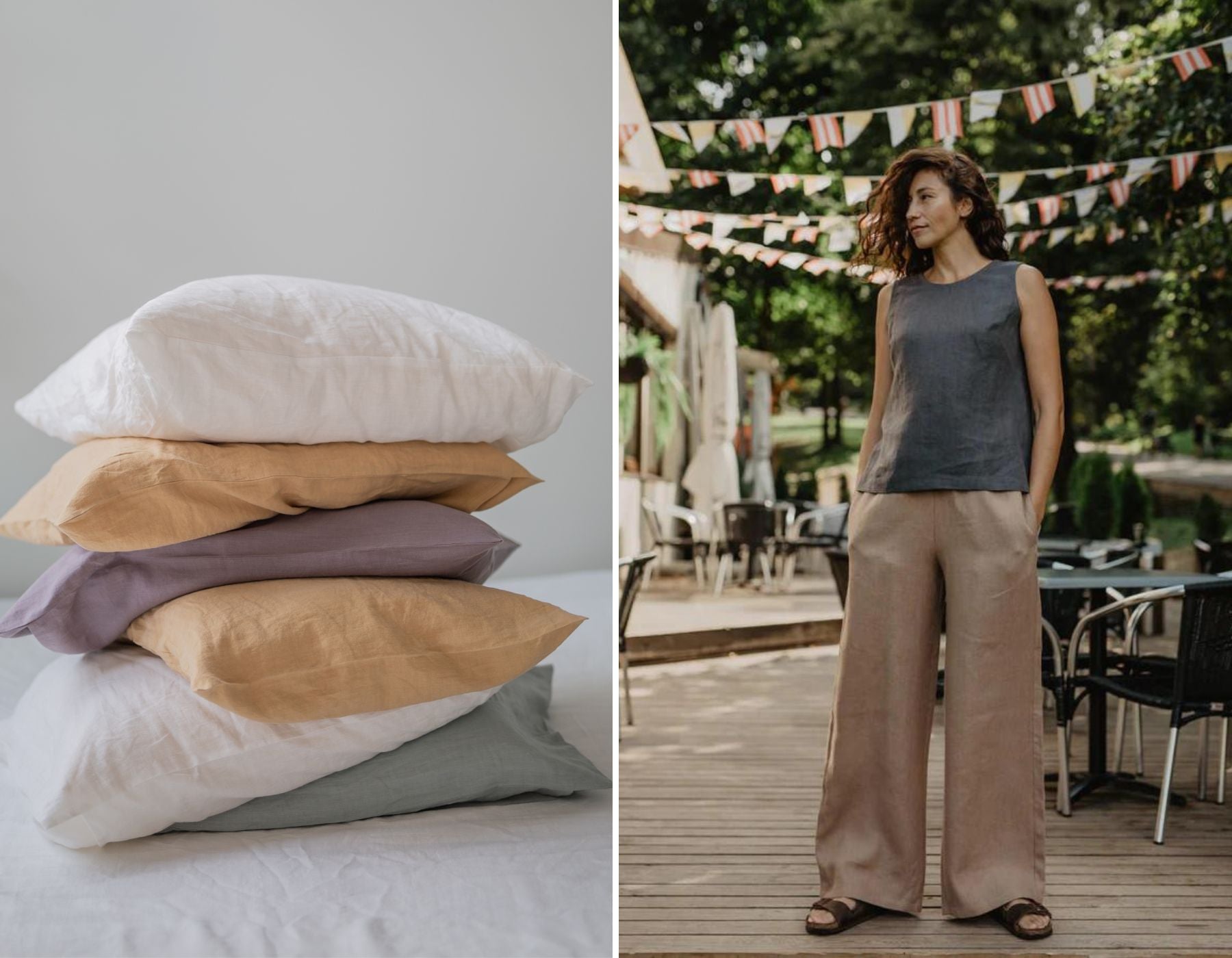Linen is a traditional and durable material that will give you joy for a long time when cared for correctly.
Check out IVALO.COM's easy linen care tips and enjoy the long life of linen with pleasure.

Placing orders is suspended

Linen is a traditional and durable material that will give you joy for a long time when cared for correctly.
Check out IVALO.COM's easy linen care tips and enjoy the long life of linen with pleasure.
Linen is a trendy and sought-after material for interior textiles. Fitting in beautifully with the Scandinavian style, linen is simple, practical and stylish.
Linen is also becoming increasingly popular in the wardrobe. Linen is considered particularly ideal for summer wear as it is breathable and feels cool against the skin. Linen provides protection from the sun's rays without feeling sweaty or hot on.
Be responsible and take care of your linen clothes and home textiles with love. Make also sure that you buy your linen from a sustainable brand (e.g. AmourLinen and Haris Cotton).

Check the linen product for washing instructions. It is often recommended to wash linen at a low temperature of 30-40 degrees celsius. Linen sauna textiles, bed linen, and towels can usually withstand higher washing temperatures.
Linen may shed fibers in the laundry. It is therefore advisable to wash linen separately from other types of laundry, especially dark-colored laundry.
The shedding of fibers may easy up as the material gets more washes in. You can also soak linen textiles before putting them in the washing machine, as linen absorbs a lot of water.
When filling the machine, make sure there is plenty of room for the linen clothes and textiles, so that the loose fibers in the linen are more easily rinsed out. This way there will also be fewer washing wrinkles.

Take into account that linen shrinks more than for example cotton (up to more than 5%) in the first wash.
However, you should not be shy about washing linen, as good quality linen likes to be washed. At its best, an old and well-cared-for linen textile is still fresh, soft, and super comfortable to wear.
Get your linen slightly larger than your usual size.
Linen has very good tensile strength, so you can pull, stretch and shape linen textiles both wet and dry.

Linen should not be shrunk with overly hot washes, but hot steam and ironing are allowed.
Linen wrinkles easily but you can iron it even at high temperatures, if necessary. It's easiest to straighten linen when the fabric is still slightly damp.
A shrunken linen shirt or dress can be gently stretched, for example with a steamer. The hot steam straightens the fibers of the garment and makes it easier to shape the garment.

One of the reasons why fine washing is often recommended for linen is the gentle spin-cycles of fine washing programs.
Harsh mechanical spinning can damage the stiff fibers of linen.
Excessive spinning can also shorten the life cycle of linen towels or bed linen.

Regular use of tumble dryer is not recommended for linen textiles. Linen fibers can become loose when tumble-dried, which over time will reduce the durability of the fabric.
However, tumble drying softens the linen and collects the fibers that are shed.
You can gently tumble dry less frequently washed linen items, such as tablecloths, bedspreads, and linen curtains. Tumble drying leaves the linen with its typical unfinished look and ironing may not be necessary.
Flax is a strong and non-elastic natural fiber. It is generally considered ecological, as flax does not require much water, pesticides, or fertilizers to grow, and can be grown in poorer soils. Flax is fast-growing and cultivation is good for the ecosystem.
Linen's beautiful texture is both timeless and trendy. Linen absorbs moisture well and transmits heat. Sustainable linen is grown, harvested, and processed in an ethical and environmentally friendly manner.
Discover our range of sustainable women's linen clothes, men's linen clothes and ecological linen home textiles.